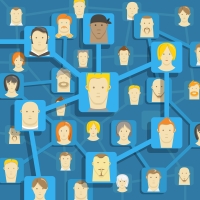The key to any company's success is advertising, and effective advertising is half the battle toward achieving global goals. The effectiveness of advertising depends on its type and distribution method. If a product promotion campaign takes place at the wrong place and time, it is unlikely to yield significant success. With the advent of the internet, a new realm for implementing the most incredible ideas has emerged.
As we know, advertising can spread directly, through a chain, or exponentially. When information is passed from one person to another, this sequence can easily break. The effectiveness of such a method is not very high. Due to widespread distrust of various types of advertising, marketers are forced to seek new ways to engage end clients.
In 1996, Jeffrey Rayport introduced and popularized the concept of "viral marketing." This method of spreading information relies on a unique distribution mechanism: the carrier of the message is the specifically interested consumer. The advertisement is supported by personal recommendations, positive emotions, and lived experiences.
Viral Advertising on the Internet
Viral advertising has flourished in the online world, where its distribution pace is incredibly rapid. It yields excellent results across the following communication channels:
- Blogs
- Forums
- Social networks
- Communities
- Information portals
- Photo/video hosting platforms
Interactive communication with people remotely expands the reach of the "virus." The social circle extends beyond acquaintances, relatives, and colleagues, crossing city, regional, country, and even continental boundaries.
Advantages of Viral Advertising:
- Cost-effectiveness. Only the idea of the advertisement is paid for, while the distribution is carried out entirely by the consumers. A well-thought-out and engaging campaign, devised by a specialist, is often very successful.
- The advertisement is not forced; it is presented naturally. The information is sown subtly. A product link may be embedded in a video, cartoon, movie, or image.
- Clarity of consumer reactions. General opinions about a product or service are formed, which can be easily analyzed and adjusted if necessary.
- Lack of censorship. While implementation must stay within legal boundaries, viral advertising offers limitless possibilities.
- Accessibility. Internet users can learn more about the product at any time, ask questions, get answers, and read reviews from other consumers.
- The lifespan of such advertising exceeds two years—a considerable period during which the brand maintains a competitive edge in the market.
Disadvantages of Viral Advertising:
It's widely known that nothing in the world is perfect, and viral marketing has a few disadvantages.
- Unpredictable results. Even if a campaign is brilliantly crafted and executed, unforeseen global events (crisis, revolution, natural disasters, etc.) can impact the general emotional state of the population, rendering the effort ineffective.
- The wave-like nature of viral marketing. Peaks and declines in recognition and popularity occur. Therefore, it's crucial to sustain interest with new ideas, improvements, and client-oriented solutions, ensuring customer gratitude.
Despite its few drawbacks, viral advertising is widely used by many companies.





